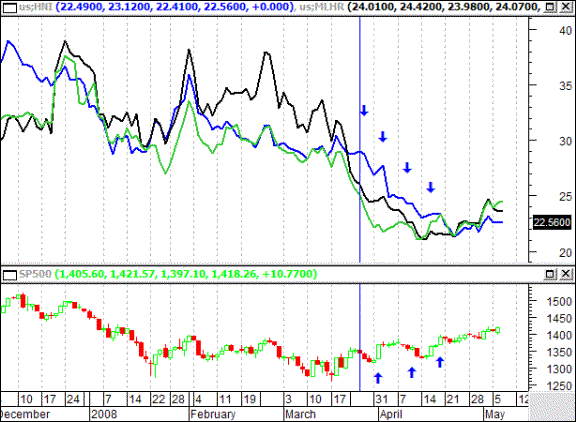| Micro-Trend Trading Tactics |
| By Price Headley |
Published
05/12/2008
|
Currency , Futures , Options , Stocks
|
Unrated
|
|
|
|
Micro-Trend Trading Tactics
Sometimes trader's can become too focused, in doing so we can limit our opportunity and limit our profits. It's a good strategy to assess past and current sector performance in order to gain an advantage for future trades. It's easier now, more than ever, to exploit industry or sector trends with ETFs. Most of us are familiar with the idea of sector rotation in investing; it seeks to outperform the market through buying outperforming sectors and selling underperforming sectors. A wonderful idea, but how do we know which ETF or sector to buy or sell?
We need to be aware of the overall sector trends and there are two ways to determine these trends. You can shuffle through individual stocks (generally large cap) if you see consistent signals you can start to define a trend. To be successful in this strategy, you need to be methodical and aware because a traders needs to recall stocks from previous days or weeks. For example, back in late March I remember stumbling upon a few similar stocks, Steelcase and Herman Miller. Most of us are familiar with these companies from their ergonomic chairs.
The simultaneous signals on Herman Miller and Steelcase, both office furniture providers, were interesting, but needed more research. Of course, barring any fundamental events that may have caused the similar moves, we started to examine the entire industry. Our signals led us to find a bigger, almost industry-wide, bearish move. In this particular instance, there are no office furniture ETFs, however, these firms have competitors that may experience the same trend. The purpose of sector trading is to limit risk, but there are other ways to gain the advantages of risk reduction from sector moves.
Other than ETFs, which can provide diversification, traders can spread risk themselves. Take a look at the chart below, which shows Herman Miller, Steelcase, and HNI Corp. against the S&P 500. The blue vertical line shows the date of our signal on March 26, 2008. The downtrend continued even as the market started to gain, the best trends are usually independent from the market.
HNI, MLHR, SCS with SPX - Daily

Going back to the sector rotation strategy, what could we do to exploit this seemingly industry specific trend? Now that we found the trend, what is the corresponding ETF? While ETFs have come a long way, there are no current ETFs that hold either of the office furniture companies as investments, I guess it's not sexy enough, office supplies? Here's the challenge, we found the trend so why not choose a single stock?
Risk Management
Choosing a single stock can be more risky than betting on the index, stemming from earnings or any business specific risk. We look for higher reward trades with limited risk and in this case the best strategy is utilizing position sizing. To gain exposure to this industry traders should enter multiple positions at a half or a third of normal exposure. Position sizing is integral for traders; in this case, we've essentially created our own index with higher reward and limited risk.
Finding the sector to buy or sell can be difficult, and once you find those trends finding an appropriate ETF or sector strategy can be even more elusive. Most traders look for trends in ETFs, but sifting through individual stocks and using smaller position sizes for multiple positions can give you even better results.
Price Headley is the founder and chief analyst of BigTrends.com.
|